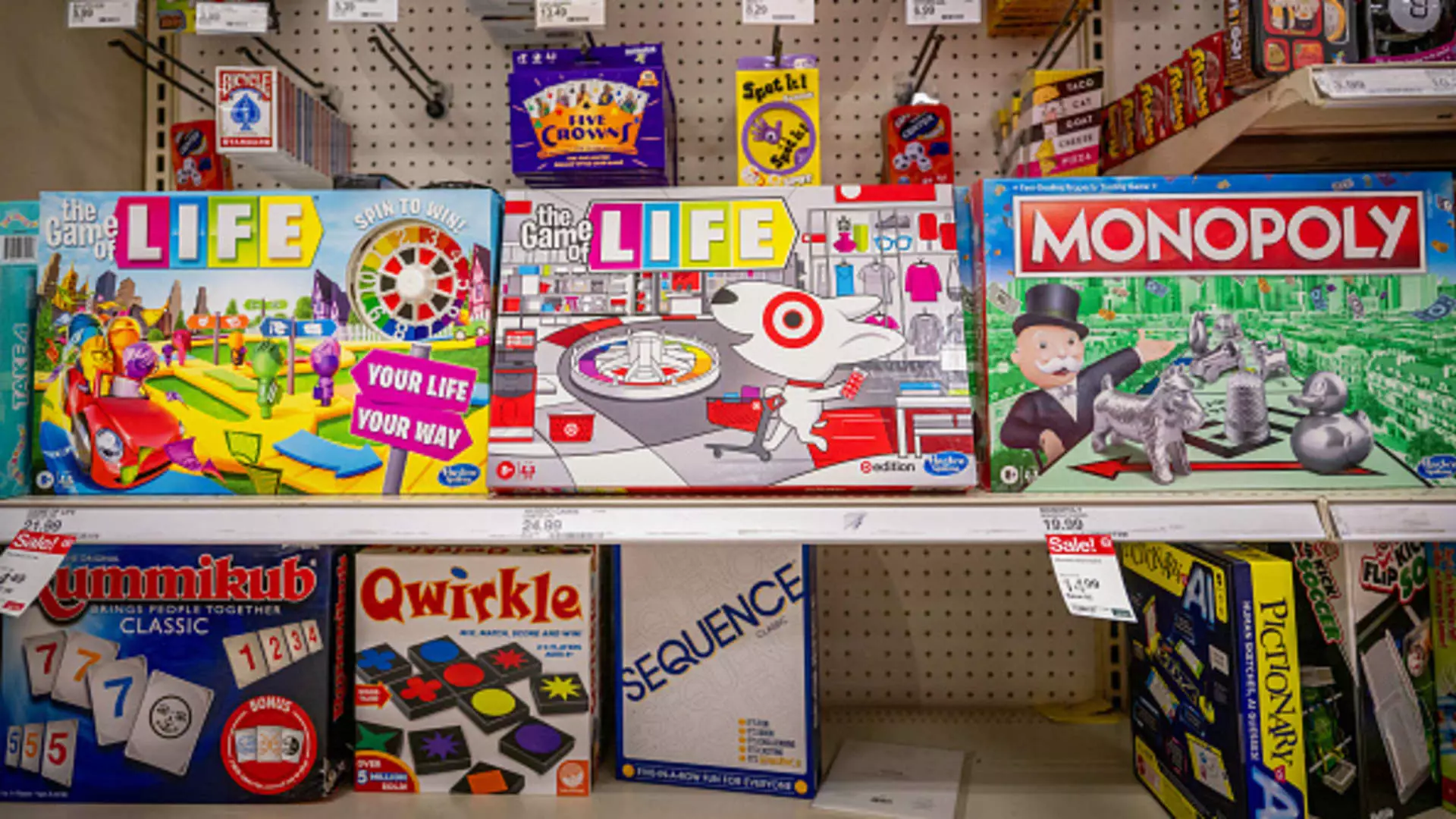The unpredictability of trade wars under the Trump administration has forced American companies, like Hasbro, into a precarious dance of survival. In a stark reflection of how tariffs can cripple domestic businesses, Hasbro announced a potentially staggering $300 million hit to its profits if a 145% import levy on Chinese goods remains intact. While the company managed to report better-than-expected earnings, the looming threat of tariffs casts an ominous shadow over the toy industry, forcing investors and analysts to question the sustainability of what once felt like a stable revenue stream.
Corporate Resilience Amidst Economic Turmoil
Gina Goetter, Hasbro’s CFO, describes the future as uncertain, navigating expectations around tariffs that might range from an optimistic 10% to a punishing 145%. The toy industry, reliant on global supply chains, finds itself wrestling with a never-ending barrage of these unpredictable costs. Nevertheless, CEO Chris Cocks argues that Hasbro is “well positioned,” a statement that leans heavily on the company’s diversification into games and licensing to mitigate risks.
The assertion that a diversified portfolio can shield a company from financial disasters seems overly optimistic given the harsh reality. Board games and digital offerings can undoubtedly provide some insulation; however, the sheer magnitude of Hasbro’s reliance on Chinese manufacturing cannot be dismissed. The transition to more domestic production, while ostensibly a solution, presents its own challenges, notably significant cost increases that might place these beloved products beyond the average consumer’s reach.
The Cost of Manufacturing: A Double-Edged Sword
As tariffs threaten to inflate consumer prices, the fallout could extend beyond corporate profits. Cocks’ warning about potential job losses highlights a moral quandary inherent in corporate strategies aimed at profit preservation: should a company prioritize its earnings over its employees? The imminent price hikes and layoffs signal an unsettling trend where profit margins triumph over worker welfare—an ethos that runs counter to the principles of fairness that many Americans hold dear.
The irony here is palpable; many of Hasbro’s iconic items, steeped in nostalgia and joy for families, could soon bear inflated price tags. Play-Doh, for instance, might soon be manufactured in Turkey, shifting costs that will ultimately be passed down to consumers. The notion that families will pay more for childhood memories is a heart-wrenching reminder of how far removed corporate decisions can be from the emotional landscapes of the very people who pay for their products.
The Complexities of Supply Chain Adjustments
Cocks candidly admits that while relocating manufacturing might sound straightforward, many products—especially those involving complex components like electronics—suffer from a lack of viable alternatives. This dilemma is the harsh reality of globalization: the skills, nuances, and technological capabilities developed over decades in China are not easily replicated anywhere else.
What of the proposed strategy to temporarily pivot production to Turkey? It raises numerous questions about logistic viability and the potential for complications that could extend timelines beyond what Hasbro anticipates. The adjustment of the supply chain is not just a matter of moving pieces on a board; it is akin to reprogramming a complex machine that, unfortunately, can become stuck amidst the gears of international business dynamics.
The Illusion of Flexibility
Despite the blowback from soaring tariffs, both Goetter and Cocks display a refreshing desire for adaptability in their strategies. Yet, the notion of “flexibility” feels like a mere veneer hiding the instability and turmoil that often follows such sweeping trade conditions. Can a company truly maintain strategic flexibility in an environment as volatile as the current political landscape? The answer likely lies in how effectively they can anticipate changes and pivot accordingly, though this requires a level of foresight that past administrations have, unfortunately, failed to provide.
What remains clear is that Hasbro’s plans to navigate this crisis are akin to trying to play chess on a board that keeps changing underfoot. As they attempt to balance defense against economic uncertainty with offensive strategies that look to maintain market relevance, they are walking a tightrope between corporate imperatives and social responsibility. It’s crucial that the company does not lose sight of its obligation to its consumers—because ultimately, those prices may not just translate to higher costs, but also a significant shift in the trust they have built over decades.


Leave a Reply